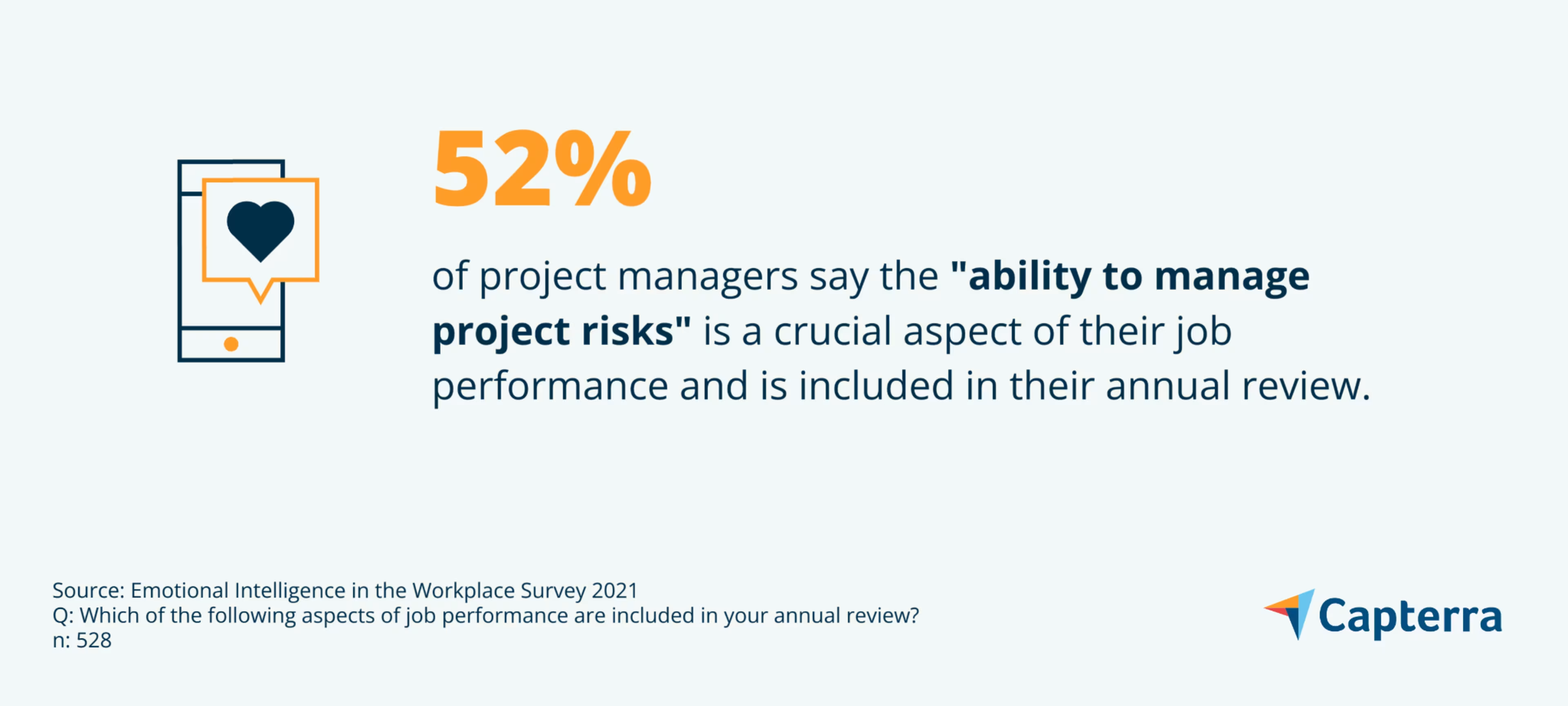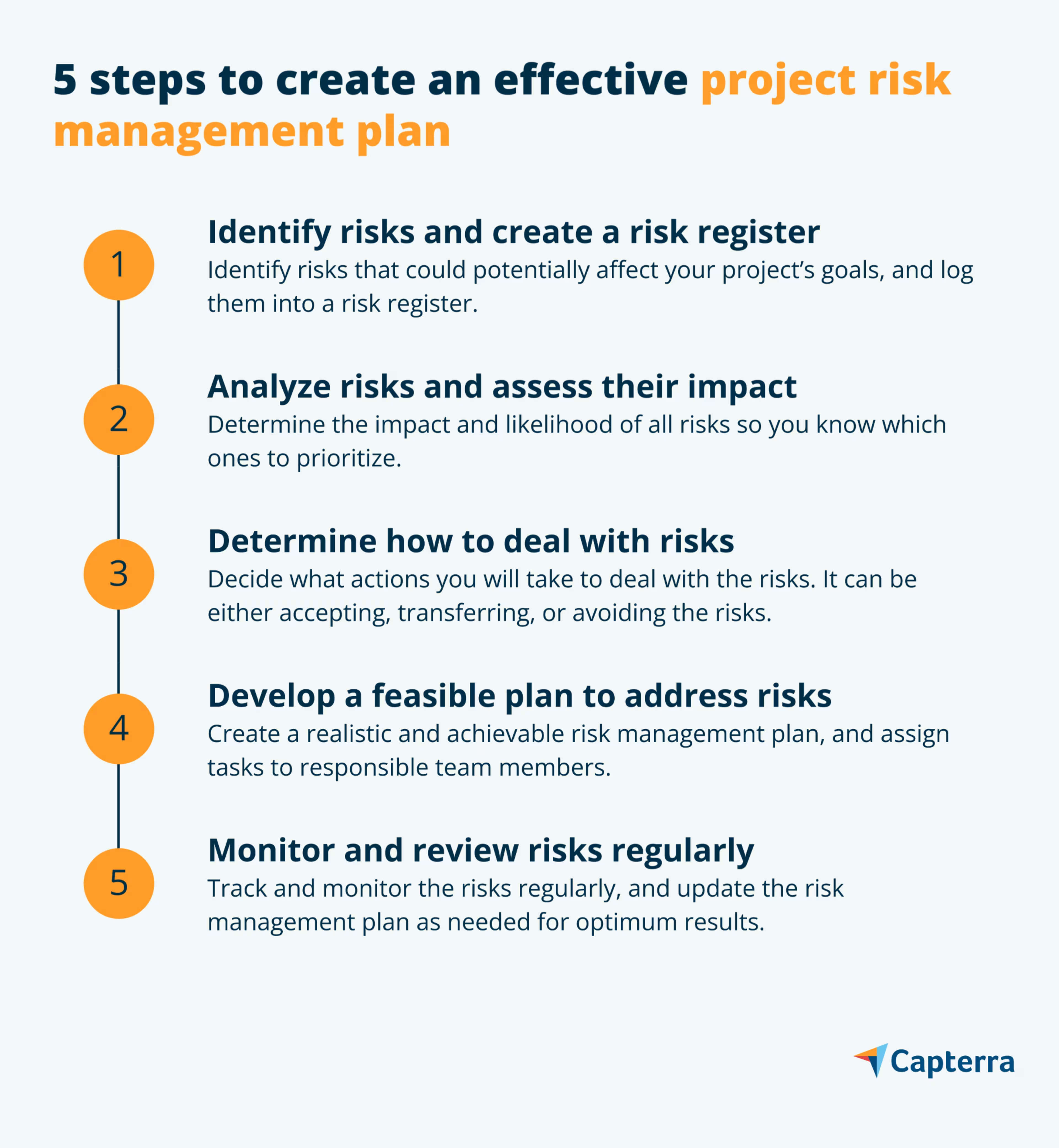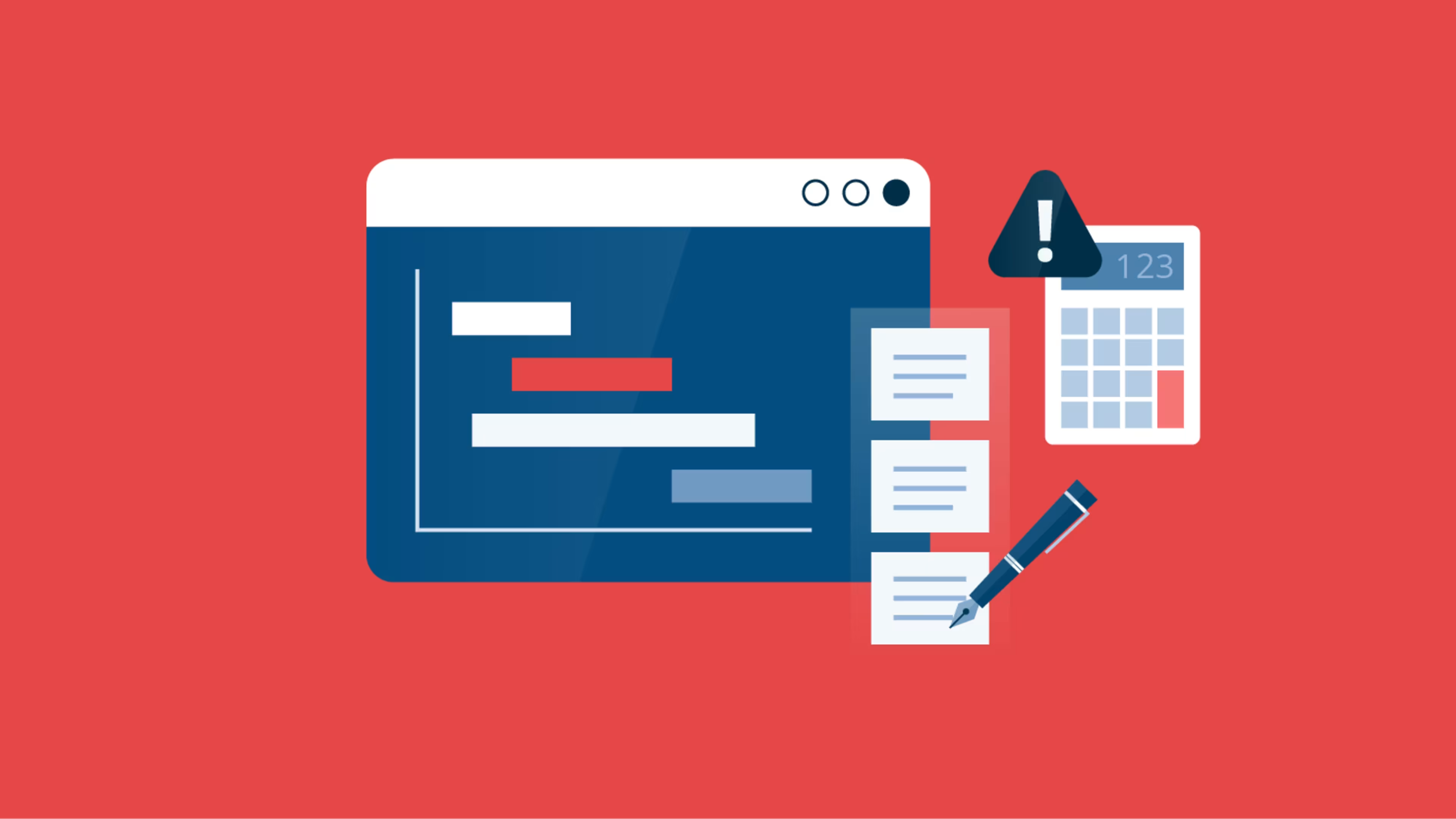A well-thought-out risk management plan helps your project succeed.
Adele, a project manager, was always looking for ways to prove her worth by showcasing her capability of handling difficult projects. One day, she took on a project that most managers would have avoided. The project was complex and included several risk factors; there was a lot that could go wrong, but the potential reward was high. Adele was confident enough to make a strategic risk management plan, and thus she succeeded.
Every day, people in business take risks. Sometimes those risks pay off, sometimes they don’t. But what separates successful risk-takers like Adele from the ones who fail is their readiness for risk management planning.
Like Adele, if you’re a project manager who handles complex projects and wants to mitigate all potential risks, creating a project risk management plan is the way to go.
Not having a risk management strategy is a sure-shot recipe for disaster, but, at the same time, creating one may seem daunting. That’s why we’ve compiled five simple steps to help you create a risk management plan. We explain how these steps prevent potential issues from arising in the first place. But first, let’s learn the basics of risk management planning.
What is a risk management plan?
A risk management plan outlines the steps to identify, analyze, assess, and respond to risks. It also includes strategies to monitor risks and minimize their impact on projects, with the aim of maximizing positive project outcomes.
Key components of a project risk management plan
Project risk background | This includes a description of the project, its objectives, and a list of all the stakeholders involved. |
Methodology | This includes a description of the risk management process to be used, and the tools and techniques to be employed during the process. |
Risk breakdown structure | This includes a breakdown of all project risks by type, such as technical, financial, or organizational. |
Risk categories | This includes a thorough description of all the risk categories that are there, such as high, medium, or low. |
Risk assessment matrix | This includes a table that lists all potential risk factors, their impact, and likelihood of occurrence. |
Risk response plan | This includes a description of the actions to be taken when a risk event occurs, such as avoidance, mitigation, or transfer. |
Roles and responsibilities | This includes a list of the people responsible for performing various tasks related to risk management. |
Ready to hire a recruiting agency for your business needs? Browse our list of companies in the following areas:
Why should you have a risk management plan?
No project is without risk. By thinking through and planning for risks beforehand, you acknowledge that they are present and need to be addressed. With a well-thought-out risk management plan, you can avoid or mitigate potential issues before they become overwhelming obstacles.
Implementing proper risk management plans and taking the steps required for risk reduction ensure your projects stay on track and accomplish their desired goals. That’s why many recruiters, while hiring project managers, emphasize the ability to manage project risks and consider it one of the most important candidate skills.

A well-formed project risk management plan helps:
Keep projects on track and schedule
Avoid costly surprises
Mitigate risks before they become big issues
Facilitate communication among team members
Protect the reputation of your company
By now, it’s clear that a risk management plan is a crucial part of any project. You can’t control the market, weather, or competitors, but you can always take necessary precautions to manage risks. Below, we have five easy steps to create an effective risk response plan for your projects.

1. Identify risks and create a risk register
The first step is to identify all the risks that could potentially affect your project’s goals. When performed early on in the project lifecycle, risk identification helps take the right steps to mitigate potential issues.
Master this step by brainstorming with your team; analyzing previous projects; and conducting a thorough analysis of your strengths, weaknesses, opportunities, and threats—known as SWOT analysis.
Common risks to identify in your project:
Delays or missed deadlines: This can happen for various reasons, such as underestimating the amount of work required, problems with suppliers, or other external factors.
Scope creep: This is when a project's scope expands, and you find yourself adding more and more features or tasks. It can be tempting to keep going, but scope expansion can quickly lead to cost and time overruns.
Cost overruns: This can be caused by unforeseen costs (e.g., higher-than-expected material prices) or scope creep (when the project scope expands beyond what was initially agreed).
Unanticipated problems with technology or equipment: This could be anything from hardware failures to software compatibility issues.
Once you have the "identified risks" in hand, add them to a risk register. A risk register is a document that lists all the risks, their potential impact, and their likelihood of occurrence. It is a vital tool that helps keep track of all risks and their status.
2. Analyze risks and assess their impact
Risk assessment is a critical step in the risk management process. After you’ve identified and added all risks to a risk register, it’s time to start risk analysis. For each risk, you need to analyze impact and likelihood.
Impact is the potential financial or operational loss that could occur if the risk materializes, and likelihood is the probability that the risk will actually occur. Rate both impact and likelihood on a scale such as low, medium, or high. This will help you identify risks that need to be prioritized.
A few ways to assess risk impact and likelihood:
Use a risk matrix: This tool helps visualize risks and their potential impact on the project.
Use a probability and impact assessment: This involves assessing the likelihood of each risk occurring and its potential impact if it does occur.
Use the Delphi method: This technique involves getting input on the risks and their potential impact from a group of experts.
Use a risk ranking tool: This tool ranks risks based on their impact and likelihood by using a scale such as low, medium, and high.
3. Determine how to deal with risks
Now that you know each risk’s potential impact and likelihood, determine how to deal with them. Depending on the risk and its severity, you can develop a risk mitigation strategy, transfer the risk to another party, or accept the risk. The most important thing is to understand what the risks are and what you can do to mitigate them.
Some common ways to deal with risks:
Transfer the risk: This is when you transfer the risk to another party, such as an insurance company. This can be done for financial risks (e.g., cost overruns), operational risks, or problems with technology.
Accept the risk: This is when you decide that the potential impact of a risk is acceptable and you don’t take any action to mitigate it. This should only be done after careful consideration and should not be used lightly.
Avoid the risk: This is when you take steps to avoid the risk altogether. For example, if there’s a risk of data theft, you install security software to protect your network.
Make sure you choose a method that complements your project risk and helps drive your desired result. By doing so, you can keep project risks under control and minimize the chances of any unwanted surprises.
4. Develop a feasible plan to address risks
Once you have determined the right way to deal with the risks, you need to develop a plan for addressing them. This plan should be realistic, achievable, and tailored to your specific project.
It should include a timeline so you can track the progress of the mitigation steps. It’s crucial to remember that some risks can never be wholly eliminated; they can only be managed to minimize impact to a certain level.
Mathias Ahlgren, founder/CEO at Website Rating, spoke to Capterra about the significance of having a workable risk management plan and shared his viewpoint.

Planning is the core of resolving any project management risks before the cracks even appear. Having a plan can lead to several solutions. For instance, it can bring together the talents of each employee working on the project and split them up into one unified objective. The key to avoiding any project management risk is to focus on the positives and use them as limiters. This way the project will go as planned.
Mathias Ahlgren
Founder/CEO at Website Rating
Things to consider when creating a risk management plan:
Establish a clear purpose: The plan should have a clear purpose so everyone involved understands what it’s for.
Identify who is responsible for each task: Make sure you identify who is responsible for each task in the plan. This will help ensure the tasks are completed on time.
Assign deadlines: Assign deadlines to each task in the plan to keep everyone on track and focused.
Create a communication plan: Make sure to have a plan to inform team members and stakeholders about the risks and how they are being addressed.
5. Monitor and review risks regularly
Since risk management is an ongoing process, it’s critical to continually monitor and review the risks. This will help ensure risks are being addressed adequately and the plan is still effective.
It’s also important to update the risk management plan as new risks emerge or mitigation steps are completed. By keeping a close eye on the risks, you can ensure your projects stay on track.
Some proven ways for regular risk monitoring and reviewing:
Schedule regular meetings: Schedule regular meetings with the project team to discuss the risks and how they are being addressed.
Communicate with stakeholders regularly: This will help ensure everyone is aware of the risks and how they are being addressed.
Review the risks at each project milestone: This will help ensure the risks are being addressed effectively and the plans are still on track.
Userisk management software: Use it to identify and assess risks early on in the project cycle, create detailed mitigation plans, and monitor and review risks on an ongoing basis.
Ensure success with results-driven project risk planning
Making a risk management plan is an essential step in any project. From cyberattacks to unexpected financials, risks can be tough obstacles to overcome.
However, with a results-driven approach, you can develop a comprehensive understanding of the risks involved in your project and put together an effective plan to address them.
If you’re struggling to manage your project’s risks or facing new ones that seem impossible to conquer, the aforementioned “easy-to-implement” steps can help you seize success.
Want to stay updated with the latest in the project management space? Check out these Capterra resources:
